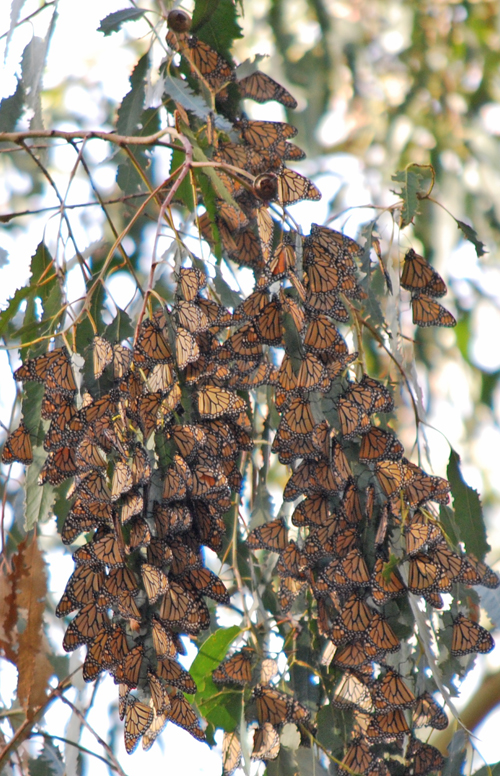You know that rush of relief when you check things off that have been haunting your to-do list for too long? I am supremely happy that I met one of my biggest goals before the end of 2014. Way back in March I told you that the wonderful sales rep who was selling my greeting cards to stores stopped repping. It took me awhile to scramble back to my feet, to decide to sell my cards on my own, and to master the many moving parts involved in that.

Designing a brochure was a big part of the project, since I can’t go visit each store to show them my cards. I kept it simple (just the facts, ma’am) – a nice large photo of each card, its number, and basic info.
My wonderful local printer, Jayne at Cerrito Printing, made the process easy and affordable, and I think the brochure turned out beautifully! Hummingbird cards take up 3 pages, the largest portion of my line.
 Butterfly cards are really popular.
Butterfly cards are really popular.
 A lot of garden stores order the flower cards, and few can resist the squirrels!
A lot of garden stores order the flower cards, and few can resist the squirrels!
 The back page has an enlarged image of my favorite card and more order info. But wait, by the time the brochure was printed I had added another large task to my to-do list – I decided to design eight new cards. When those were all printed (thanks, Cerrito Printing!) I designed an insert page to show them off, and even had room for an order form.
The back page has an enlarged image of my favorite card and more order info. But wait, by the time the brochure was printed I had added another large task to my to-do list – I decided to design eight new cards. When those were all printed (thanks, Cerrito Printing!) I designed an insert page to show them off, and even had room for an order form.
So now I’m well on my way selling my own cards, a lot of work but really fulfilling. If you know of any shops that carry my kinda greeting cards, also garden stores or nurseries, send me an email with the name of the store and I’ll contact them! You can click here to see my entire card line, and here’s a link to the brochure as a pdf.




































